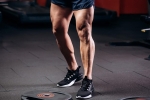How to Stretch Your Quad after ACLR Surgery with Quad Autograft?

Stretching your quadriceps after a quad autograft harvest is crucial for maintaining flexibility, reducing tightness, and aiding in recovery. However, it's important to do so carefully to avoid injury. Here are some safe and effective quadriceps stretches that you can perform post-surgery, typically starting once your surgeon or physical therapist gives you the go-ahead.
Precautions
- Consult Your Doctor: Always get clearance from your surgeon or physical therapist before starting any new exercises or stretches.
- Start Slowly: Begin with gentle stretches and gradually increase intensity as you gain strength and flexibility.
- Pain-Free Range: Perform stretches within a pain-free range. Mild discomfort is normal, but sharp pain should be avoided.
Gentle Quadriceps Stretches
1. Quadriceps Setting (Isometric Quad Contractions)
- Purpose: Engage the quadriceps without significant knee movement.
- How to Do It:
- Sit with your leg straight out in front of you.
- Tighten your thigh muscle by pressing the back of your knee down into the floor or bed.
- Hold for 5-10 seconds and then relax.
- Repeat 10-15 times.
2. Prone Quadriceps Stretch (Heel to Buttocks)
- Purpose: Stretch the quadriceps gently while lying on your stomach.
- How to Do It:
- Lie face down on a firm surface.
- Bend your knee to bring your heel towards your buttock.
- Use a strap or towel around your ankle to gently assist the stretch.
- Hold for 20-30 seconds, then relax.
- Repeat 2-3 times per session.
3. Standing Quadriceps Stretch
- Purpose: A gentle stretch for the quadriceps while standing.
- How to Do It:
- Stand with your feet hip-width apart, holding onto a sturdy surface for balance.
- Bend the knee of your operated leg, bringing your heel toward your buttock.
- Hold your ankle with your hand, using a strap if needed.
- Keep your knees close together and avoid arching your back.
- Hold for 20-30 seconds, then release.
- Repeat 2-3 times per session.
4. Side-Lying Quadriceps Stretch
- Purpose: A less intense stretch for the quadriceps.
- How to Do It:
- Lie on your non-operated side with your head supported.
- Bend your top knee and bring your heel towards your buttock.
- Hold your ankle with your hand or use a strap.
- Keep your pelvis stable and avoid rolling forward or backward.
- Hold for 20-30 seconds, then relax.
- Repeat 2-3 times per session.
Additional Tips
- Warm Up First: Engage in a light warm-up, such as walking or stationary cycling, before stretching to increase blood flow to the muscles.
- Consistency: Stretch regularly, ideally every day, to maintain flexibility.
- Combine with Strengthening: Incorporate quadriceps strengthening exercises as recommended by your physical therapist to aid in recovery.
- Listen to Your Body: Pay attention to your body’s signals and modify stretches as needed to avoid overexertion.
By following these guidelines and working closely with your healthcare team, you can safely and effectively stretch your quadriceps after a quad autograft harvest, promoting a smoother recovery.



